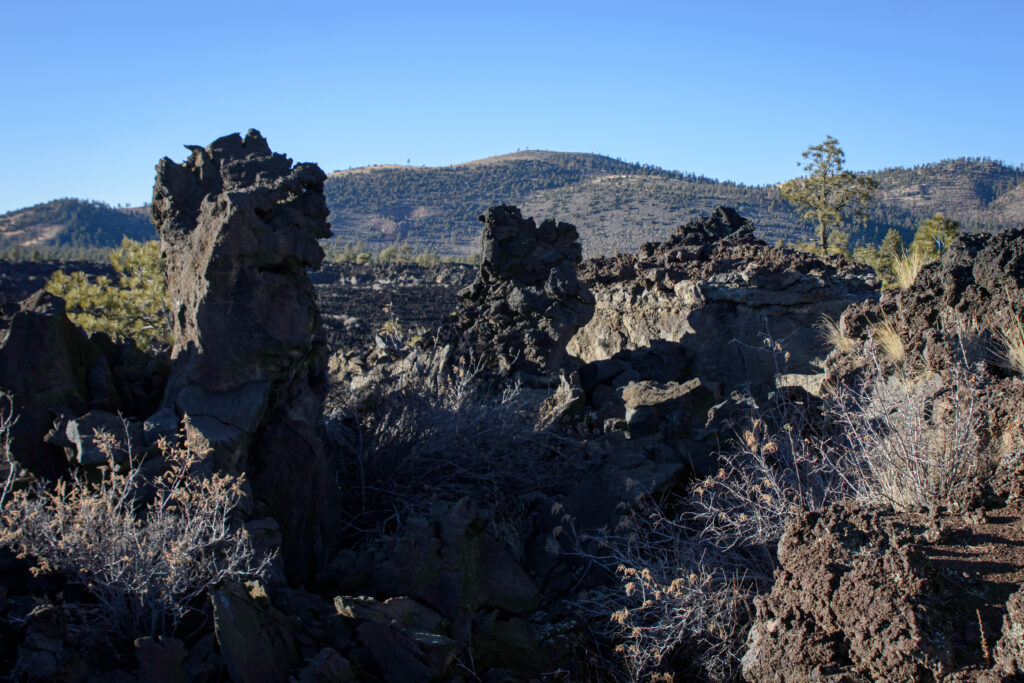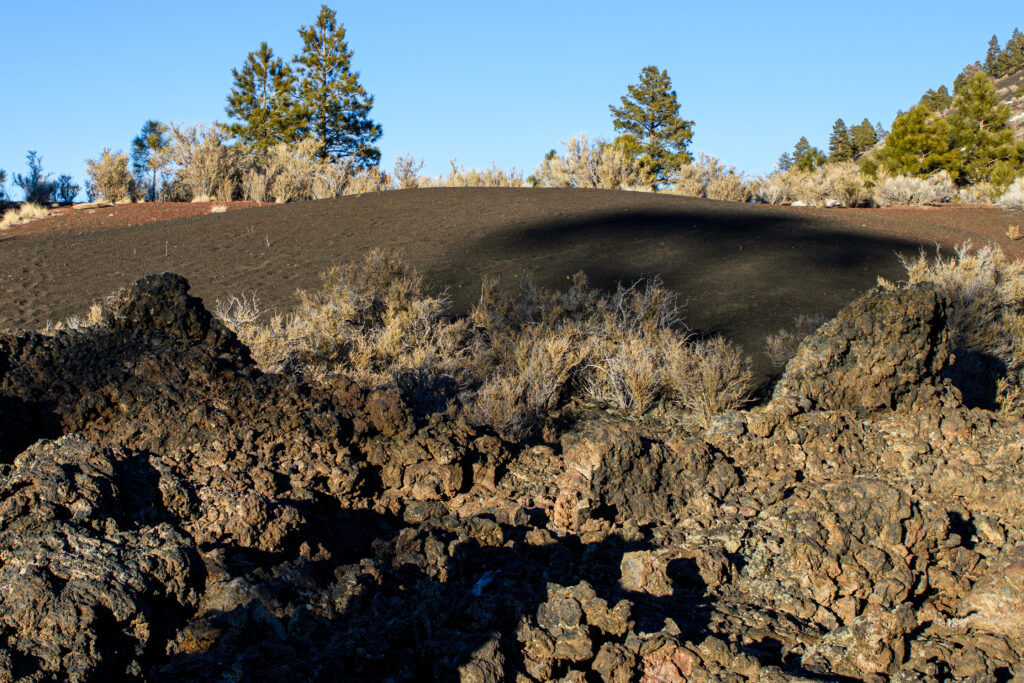
As interested as I’ve been in Arizona and for as long as I have, one item I would never have included among the state’s primary geological features is volcanos. But the entire landscape surrounding Flagstaff is dominated by volcanic formations. Even its signature San Francisco Peaks are extinct volcanos. Volcanic material also constitutes a prevalent part of the soil throughout the state.

Among the 600 plus cinder cones in the San Francisco Volcanic Field, sits one of the most recently active volcanos in the continental United States. Now known as Sunset Crater, because of the red oxidation of the materials at its crown, the remains of this cone stand around 1000 feet high.

About 1000 years ago, on the edge of a forest where Sunset Crater now stands, dwelt a group of around 2000 people who cultivated corn and lived in small collections of wood-framed houses built into shallow pits. The soil in the vicinity was nutrient-rich, and the farming seems to have provided them with ample sustenance.
One day, about 940 years ago, the ground began to shake. Perhaps the people knew immediately what this meant. After all, they lived in an area where the cataclysmic results of hundreds of previous eruptions were part of their everyday view. If the repeated shaking of the ground didn’t make the connection evident, the eventual cracks in the earth from which hot vapors sporadically poured forth would have made the future even clearer. And finally, the six-mile fissure which began spraying liquid fire a thousand feet into the air, would have left no room for doubt of what was coming.


In any case, at some point after the first signs of activity commenced, the people began to pack up. Not too quickly, it doesn’t seem. For one thing, they took the time not only to remove their possessions, but even to methodically dismantle their houses in order to use the materials for rebuilding after their relocation.
For another thing, it seems they took time to experiment, perhaps even playfully, with the lava which would at first have flowed rather slowly from the fissures. The evidence of this curiosity is a number of lava rocks into which corn cobs seem intentionally to have been pressed as the molten material cooled, leaving permanent corncob impressions in the resulting rock. Some of these corn rocks seem even to have been taken away as souvenirs and were incorporated into the walls of later stone dwellings.
At some point, however, the time for fun and games came to an end. The eruption that began somewhat mildly, deposited more and more cinder at a central site, building the 1000 foot high cone. Then the explosions began. There look to have been at least five of these violent blasts, one of which may have blown material almost twenty miles into the air. Lava then flowed from the base of the cone flooding the immediately surrounding valley. When this cooled, the previously fruitful land was buried under nearly one hundred feet of material, spilled into flat plains, piled in fractured heaps, and punctuated by twisted towers of jagged stone.



But where did the people go? They migrated about fifteen miles to the north to join some folks living in a number of stone pueblo settlements, of which Wupatki is the most prominent. However, adding their number to these northern settlements presented a potential problem. Wupatki and its neighboring settlements were small for a particular reason: the soil surrounding them was very difficult to farm, primarily because its mineral constituents prevented it from retaining water. How would they be able to sustain the additional 2000 folks who were joining them? As it turns out, the volcanic apocalypse that rendered their previous home uninhabitable, also spewed enough ash into the air to cover the entire surrounding 900 square miles, infusing the soil with enough material to increase its water-retention and enabling the land to support the enlarged communities’ agricultural needs for the next hundred and fifty years.

